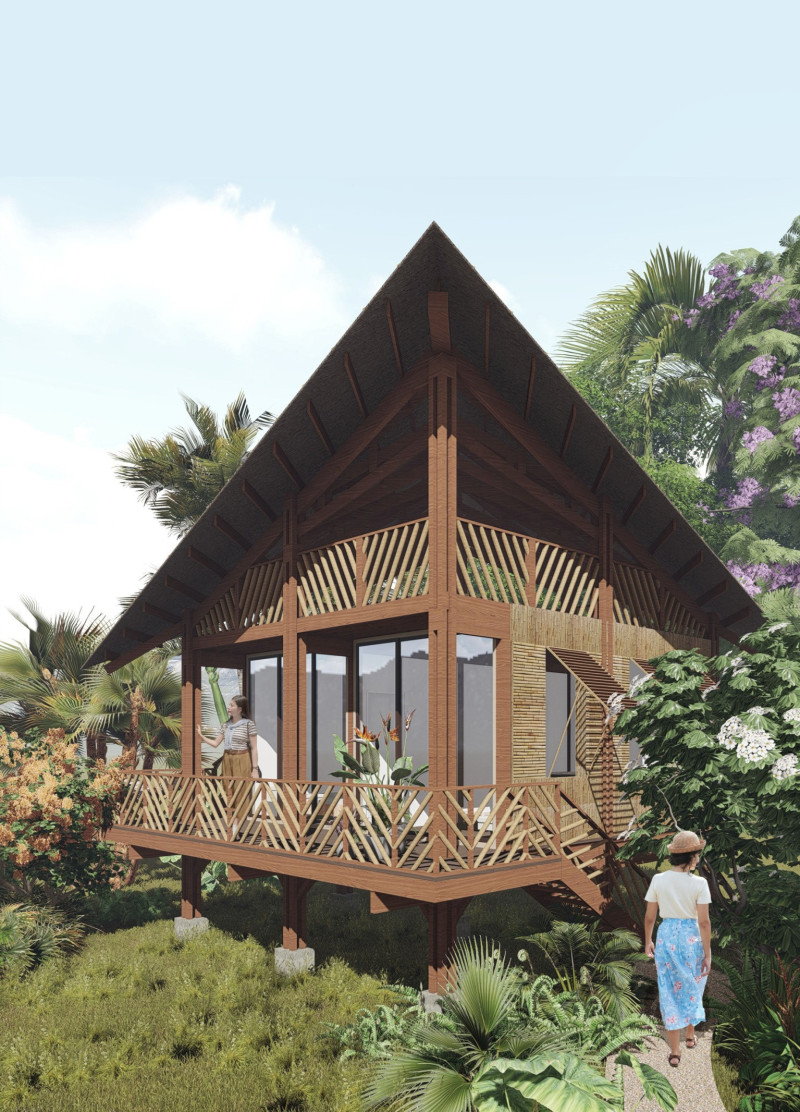5 key facts about this project
Regen House represents an ecological approach to modular home design, focusing on simplicity and adaptability. Located in varied geographical settings, the project caters to the modern need for residential structures that integrate with their surroundings while providing functional living spaces. It encourages flexibility and customization, allowing residents to shape their homes according to personal requirements.
Structural Framework
The framework of Regen House uses standard dimensional wood, joined together to create structural integrity similar to heavy timber frame construction. Each column consists of four 4x4 posts that rest on concrete piers, forming a solid foundation for the structure. Running parallel to the building, 4x12 beams at each floor level support the overall load and maintain stability. A 4x10 beam is installed perpendicularly above the lower beam, alongside 2x10 floor joists. This configuration results in a strong and reliable structural system.
Roof Design and Ventilation
An important feature of Regen House is its roof structure, which employs a scissor truss system made from 2x10 and 2x8 members. This design not only shapes the building's profile but also enhances its thermal performance. An open screen system facilitates natural ventilation, allowing air to flow freely and reduce the need for mechanical cooling. The roof provides shading, promoting a comfortable indoor environment while ensuring efficient air circulation.
Adaptability and Sustainability
Regen House is designed for adaptability, allowing for the addition of modules to expand the living space. The base model can shift from a one-bedroom, one-bath layout to a two-bedroom, two-bath configuration by integrating additional modules. Sustainable features, such as rainwater harvesting systems and photovoltaic panels, support efficient resource use and energy independence. Rainwater can be collected and treated using a UV filtration system, further enhancing the project's commitment to sustainability.
Local Context Integration
The design of Regen House integrates well with its local context, maintaining a consistent core structure while allowing for variations in finishes based on geographic location. For homes in Southeast Asia, this could include bamboo walls and thatched roofs that are suited to the climate. In contrast, colder regions like Oregon would benefit from thicker insulation and robust siding to protect against harsh winter weather. This focus on local materials fosters a strong connection between the structure and its environment.
The thoughtful integration of features and structural elements illustrates a comprehensive approach to modern living spaces. Regen House stands as a model of how architecture can respond to both individual needs and environmental challenges, creating a balanced and practical habitat.






















































